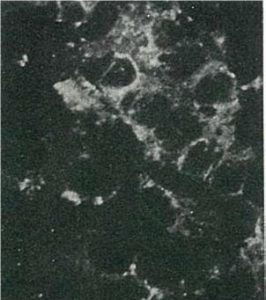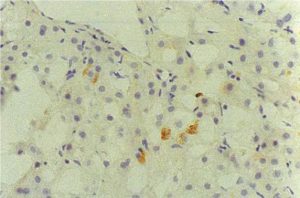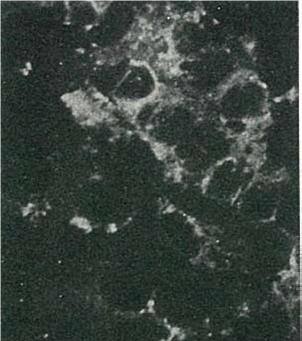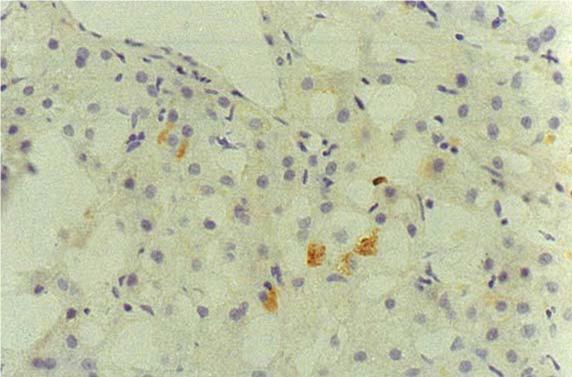Description
Hepatitis C virus (HCV) is a small (55-65 nm in size), enveloped, positive sense single-stranded RNA virus in the family Flaviviridae and the principal cause of parenteral non-A, non-B hepatitis. The virus genome consists of a single open reading frame of approximately 9.4 kb which encodes a single polyprotein of about 3,010 amino acids (1, 2, 3). The polyprotein is processed by host cell and viral proteases into four structural proteins (core, envelope 1 and 2, and p7) and six non-structural proteins (NS2, 3, 4a, 4b, 5a, and 5b) necessary for viral replication. HCV core protein is not only a component of nucleocapsid but also has multiple functions and is a pathogenic factor for hepatitis. It also participates in some cellular processes, including transcriptional regulation and cellular transduction. HCV core antigen is used as diagnostic marker for HCV infection.
Applications
- Western blot
- Immunohistochemistry
- Immunofluorescence staining
- ELISA
- FACS
Specification
Immunogen: A part of the core region (nucleotides 369-704, amino acids 13-124) of HCV expressed in E. coli (the nucleotide sequence is shown in ref.3)
Conjugate: Biotin conjugated, [biotin] / [IgG] = 6.6
Isotype: Mouse IgG2a kappa
Form: 0.7 mg/ml in PBS, 50% glycerol, filter-sterilized
Specificity: Specific to human HCV core antigen of genotype 1b. Not tested in other genotype
Storage: Ship at 4°C and long term storage at -20°C
Data Link: Swiss-Prot HCV protein
References: This antibody is used in ref.4 and 5.
- Brass V, Moradpour D, Blum HE. Molecular Virology of Hepatitis C Virus (HCV): 2006 Update. Int J Med Sci 2006; 3:29-34. PMID: 16614739
- Kato, N. et al. (1990) “Molecular cloning of the human hepatitis C virus genome from Japanese patients with non-A, non-B hepatitis.” Proc. Natl. Acad. Sci. USA 87, 9524-9528 PMID: 2175903
- Takamizawa, A. et al. (1991) “Structure and organization of the hepatitis C virus genome isolated from human carriers.” J.Virol.65, 1105-1113 PMID: 1847440
- Manabe, S. et al. (1994) “Production of nonstructural proteins of hepatitis C virus requires a putative viral protease encoded by N3.” Virology 198, 636-644 PMID: 8291245
- Hiramatsu, N. et al. (1992) “Immunohistochemical detection of hepatitis C virus-infected hepatocytes in chronic liver disease with monoclonal antibodies to core, envelope and NS3 regions of the hepatitis C virus genome.” Hepatology, 16, 306-311 PMID: 1379209

Fig. 1 Western blot of HCV core protein.
Chimp liver cells were infected with recombinant vaccinia virus containing a HCV genome cDNA and were subjected to Western blot using this antibody. The core protein is detected as a 22kDa band.

Fig.2 Detection of HCV core protein by immuno-fluorescence antibody staining.
Chimp liver cells were infected with recombinant vaccinia virus containing a HCV genome cDNA.
After incubation for 48 hr, the cells were fixed with acetone and HCV core protein was detected by indirect immunofluorescence staining using this antibody.

Fig.3 Immunohistochemical detection of HCV core protein.
Tissue section from a patient with chronic hepatitis C was immunostained to reveal cells expressing HCV core antigen, which are scattered in the lobules (indirect immuno-histochemical method, counterstained with Mayer’s hematoxylin).





Reviews
There are no reviews yet.